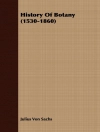This book presents advances on the state of the art in smart cities systems and applications based on the proof of concept and prototyping for smart cities in an interdisciplinary context of engineering and information sciences. Smart cities have emerged as highly complex technological endeavors that combine knowledge and technology from many disciplines ranging from information sciences to engineering. Due to their complex nature, the modeling, development, and prototyping of applications in smart cities present a myriad of challenges, including technical, economic, and social ones, across application subdomains such as smart transportation, social welfare, tourism, and smart industry. It becomes difficult or sometimes impossible to provide a solution for such potential research issues and challenges from a traditional disciplinary-approach only; to tackle such research issues and to make the paradigm of smart cities a reality, interdisciplinary approaches are deemed necessary. Readers, developers, practitioners, and policy-makers in the field find in the book insights, experiences, findings, and perspectives on smart cities applications with an emphasis on real-life prototyping, beyond the confines of laboratory experiments.
Table of Content
Critical Infrastructures Resilience in the Context of a Physical Protection System.- Smart City Security based on Meta-Security Framework for Digital Twins.- On-Premise Artificial Intelligence as a Service for Small and Medium Size Setups.- Incentives in Surplus Food Distribution for Smart Cities and Beyond: An Activity Aware Solution.- Evaluation of Smart Charging Integrated with Smart Energy Management and Advance Booking in an e Mobility Urban Living Lab.- Vehicle Allocation Algorithm Improving User Satisfaction in Ride.- A City Airspace Testbed for Drone Networks in Future Smart Cities.- A Feasibility Study of Tethered Autonomous Moving Cells for Smart City.- Relationship among Different Types of Input and Model Accuracies in LSTM Driver Models. Watch-from-inside: 3D sensing system to monitor the outside from inside.- Federated Learning with Client Selection in Resource-uncertain Wireless Networks: Simulation and Proof of Concept Experiments.












